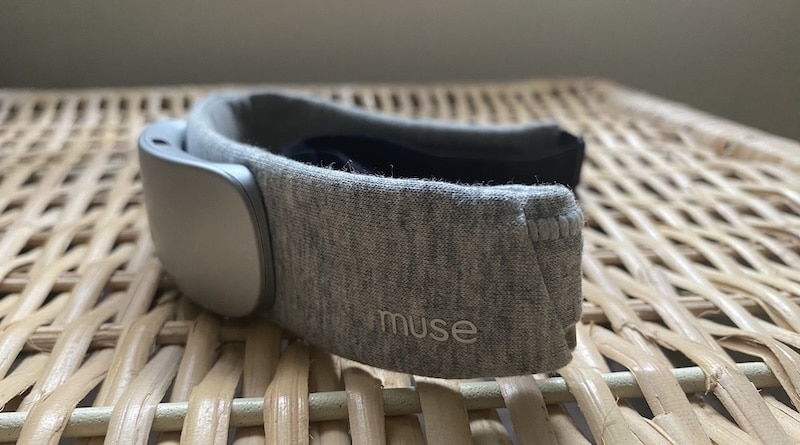
5 reasons Muse S Athena is the best all-in-one brain tracking tool
Muse S Athena is a proper step forward for brain-sensing wearables. It picks up where Muse S left off, with more sensors, better data, and some features that finally make this headband feel like a tool for mental training, not just meditation.
I’ve used every version of Muse going back to 2019. What felt experimental back then now feels structured. As noted in my hands-on review, Athena brings together EEG, fNIRS, heart rate, movement and breath into one setup. But it’s the new feedback systems and visualisation tools that make it feel more useful day to day. It doesn’t just read your brainwaves, it gives you something to work with.
There are a few other brain-sensing headbands out there, but none of them really do what this one does. Some stick to EEG, others just throw in a bit of sleep or relaxation stuff. Muse S Athena pulls everything together in one device. You get real-time brain visualisation, effort tracking, focus training, sleep tools, the lot. Nothing else really comes close to offering all of that in one place.
You get real-time brainwave and blood flow visualisation
One of the first things you notice with Athena is that you can watch your brain activity live. Gamma, beta, alpha, theta, delta – every wave type is shown in real time during sessions.
Post-session breakdowns show what was going on in your head throughout the session. It’s detailed and surprisingly easy to read. Over time, you start recognising your own patterns. It really does feel like a set of mental fingerprints, especially once you’ve seen a few sessions stacked together. This kind of live feedback was missing in earlier models. Now it’s front and centre.


It tracks mental effort using fNIRS
This isn’t just brainwave monitoring anymore. Muse S Athena uses near-infrared light to measure how much oxygen your brain is using. That shows how hard your brain is working. So not just the state it’s in, but how much energy it’s burning to stay there.
It adds a layer that EEG alone doesn’t give you. You can be focused and calm, but also pushing your brain hard to stay there. Or you might be in a relaxed state with very little effort behind it. Either way, Athena shows you what’s going on underneath. Alongside EEG, heart rate, breath, movement and oxygenation, it paints a clearer picture of how your brain performs in real-world situations. Whether you’re dialed in, zoning out or recovering.
Cognitive Performance and Brain Recharge scores make the data more usable
Muse S Athena introduces two new scores that help turn raw brain data into something you can act on. Cognitive Performance tells you how mentally sharp you are that day. Brain Recharge shows how well your brain has recovered.
These scores are not just surface-level. They’re based on EEG signals and become more accurate over time as the device builds a baseline. It’s like a readiness score, but for your head. I found them useful straight away. The performance score tends to match how focused I feel during the day, and recharge reflects how well I slept or recovered mentally. It’s the kind of feedback you can check daily without getting buried in graphs.
That said, this is a feature that requires monthly membership. So that’s worth pointing out. Pretty much everything else comes with the purchase.


Signal quality is a big step up from earlier Muse models
Older Muse models had issues with dropouts and signal loss. Athena handles this much better. The new EEG layout gives you more channels and higher resolution. The heart rate sensor also got an upgrade. It now uses a triple-wavelength PPG sensor that tracks more accurately whether you’re meditating or asleep.
Sessions lock in faster, and once you start, the signal tends to stay put- even with some movement. That makes a difference when you’re wearing the band for 20 or 30 minutes, or overnight. It just works more consistently now.
Strength sessions train focus like a mental workout
This is where Muse stops being just a meditation tool. The new Strength sessions are designed to train focus, not just relaxation. Your task is simple: concentrate as hard as you can on a point in the distance. Your mental effort moves an owl across the screen. The harder you focus, the faster it flies.
It sounds odd, but it works. The session pulls both EEG and fNIRS data to measure how much focus you’re generating. It’s a subtle but important shift. Now you’re not just trying to calm your thoughts, you’re training your brain to sustain effort. Some sessions are better than others, and yes, I’ve had days where the owl barely moved. But when it clicks, you feel it. That makes it different from anything Muse has done before.



Those ready to dive in can pick up the Muse S Athena from the choosemuse.com website. To save 15%, use code “gadgetsandwearables” at check-out. And don’t forget to have a read through my full hands-on review.
Subscribe to our monthly newsletter! Check out our YouTube channel.
